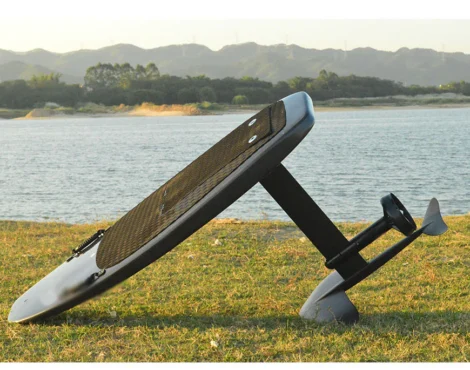
eFoil vs. Traditional Surfing: Which One Should You Choose?
Introduction:
eFoil vs. Traditional Surfing, When it comes to water sports, the world of surfing has always been exhilarating and captivating. However, with the advent of technology, a new contender has emerged – the eFoil. Electric hydrofoil surfing, or eFoiling, offers a unique and futuristic twist to traditional surfing. In this blog post, we’ll explore the key differences between eFoil and traditional surfing, helping you determine which one is the right choice for your water adventure.
1. The Learning Curve:
Traditional Surfing: Traditional surfing has a steep learning curve that requires time, practice, and a solid understanding of wave dynamics. It can take weeks or even months to catch your first wave and achieve balance on a traditional surfboard.
eFoil: One of the remarkable aspects of eFoil is its user-friendly nature. With electric propulsion and hydrofoil technology, eFoils provide stability and control, making it easier for beginners to get started. The learning curve is significantly shorter, allowing riders to experience the thrill of gliding above the water in a relatively short amount of time.
2. Physical Exertion:
Traditional Surfing: Surfing demands physical strength, endurance, and the ability to paddle through waves to catch the perfect wave. It requires a certain level of fitness to enjoy extended sessions in the water.
eFoil: Electric hydrofoils eliminate the need for constant paddling, as they are propelled by an electric motor. While eFoiling still requires balance and coordination, the electric assist reduces the physical exertion required, allowing riders to enjoy longer sessions without fatigue.
3. Wave Dependence:
Traditional Surfing: Traditional surfers rely on natural waves, and the quality and size of waves can greatly impact the surfing experience. Wave conditions can be unpredictable, and there may be days when suitable waves are scarce.
eFoil: One of the advantages of eFoiling is its independence from wave conditions. With an eFoil, you can enjoy riding on calm lakes, rivers, or even open ocean areas with minimal wave activity. This opens up a wider range of locations and allows for consistent riding opportunities regardless of wave conditions.
4. Accessibility and Versatility:
Traditional Surfing: Surfing typically requires access to suitable surf breaks or beaches with consistent waves. Not all locations are ideal for traditional surfing, limiting its accessibility for those who don’t live near the coast.
eFoil: Electric hydrofoils provide greater accessibility and versatility. You can enjoy eFoiling in various bodies of water, such as lakes, rivers, and even bays. This versatility makes eFoiling an attractive option for those who want to explore waterways beyond traditional surf spots.
Conclusion:
eFoil vs. Traditional Surfing comes down to personal preference, experience level, and the type of water adventure you seek. If you’re looking for an exciting, futuristic experience with a shorter learning curve and reduced physical exertion, eFoil may be the perfect fit. On the other hand, if you enjoy the challenge and connection with natural waves, traditional surfing might be the way to go. Whichever option you choose, both eFoiling and traditional surfing offer unique and unforgettable water experiences that will leave you craving for more.
Remember, you don’t necessarily have to choose one over the other. Many water enthusiasts enjoy both eFoil and traditional surfing, allowing them to experience the best of both worlds. So, why not give them both a try and discover the joys of riding the waves, whether propelled by nature or technology?


